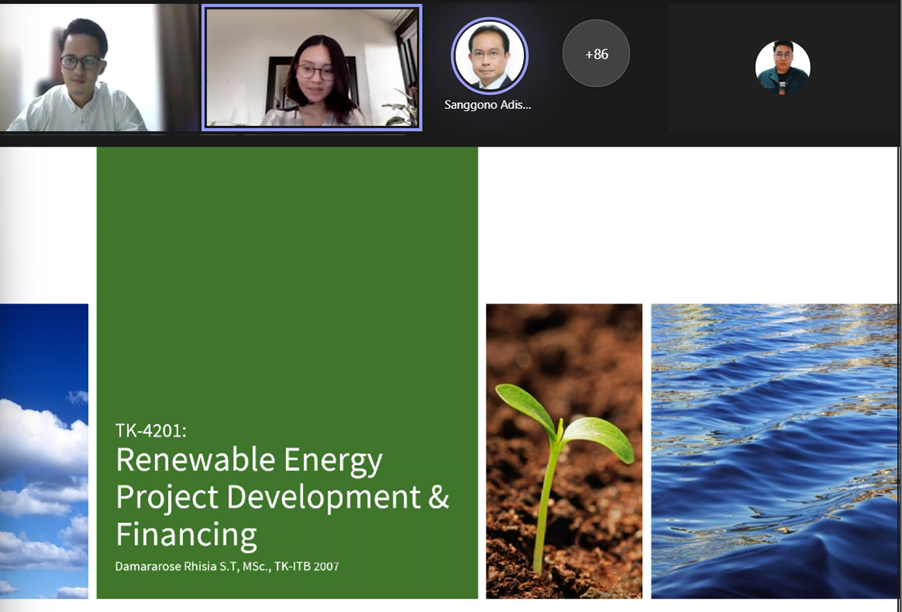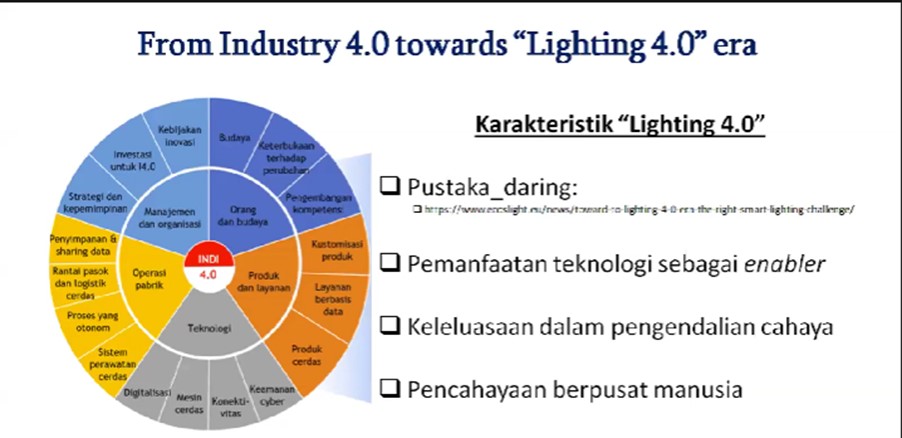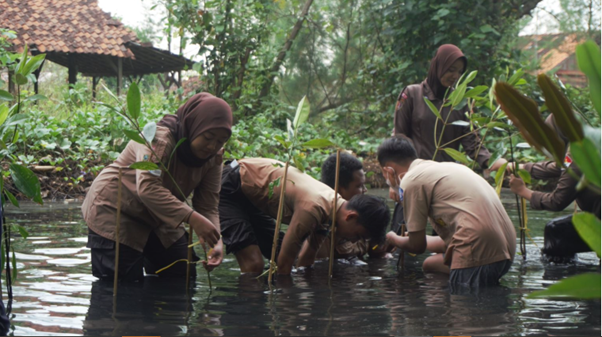Financial Planning in Renewable Energy Development
By Adi Permana
Editor Adi Permana

BANDUNG, itb.ac.id— One phenomenon currently happening all over the world for the last few years is climate change. One of the biggest causes of it are carbon emissions which makes the Earth’s temperature rise up to 2°C. Due to that, various countries all around the world have created an agreement called “The Paris Agreement” to tackle global warming.
Senior Project Finance Finergreen, Damararose Rhisia S.T., M.Sc., presented lecture materials regarding “Project Financing for Renewable Energy Development” in a guest lecture for the TK4201 - Chemical Engineering Professional Seminar course on Friday (18/3/2022).
She stated that in developing projects, several processes and phases must be done. The first phase is the development phase. “The development phase is made up of feasibility studies consisting of studies about the land and other physical aspects, as well as fulfilling existing regulations. The development phase is then continued with the collection of proposals or bids. Lastly, the development phase ends with the power purchase agreement signing,” She explained.
The next phase that has to take place is the financial and construction phase. During the financial phase, the project will detail funding requirements for construction to carry out. The flow of this financial phase starts from the Independent Power Producer (IPP), who has the project’s ownership. The IPP then visits the Project Special Purpose Vehicle to discuss the funding. This funding can be granted by two types of agreements. The first type of agreement is by deciding said funding as debt, and the second is by deciding it as an equity or share of project ownership percentage.
One example of funding plans shown in this presentation is the development of the Cirata Floating Solar project. This project which was owned by PT PLN, PT Pembangkitan Jawa-Bali, dan Masdar has a capacity of 145 MVP and a PLN fee as big as USD 5.8c/kWh. Said project required funding as expensive as IDR 1.8 trillion. Funding for this project was obtained from various institutions, such as Standard Chartered, SMBC, and Societe Generale. “This Cirata Floating Solar project will power 50 thousand homes and also decrease carbon emissions by up to 214 thousand tons,” said Rhisia.
Reporter: Yoel Enrico Meiliano (Food Engineering, 2020)
Translator: Hanna Daniela Ayu (Faculty of Mechanical and Aerospace Engineering, 2021)

.jpg)
.jpg)

.jpg)
.jpg)


